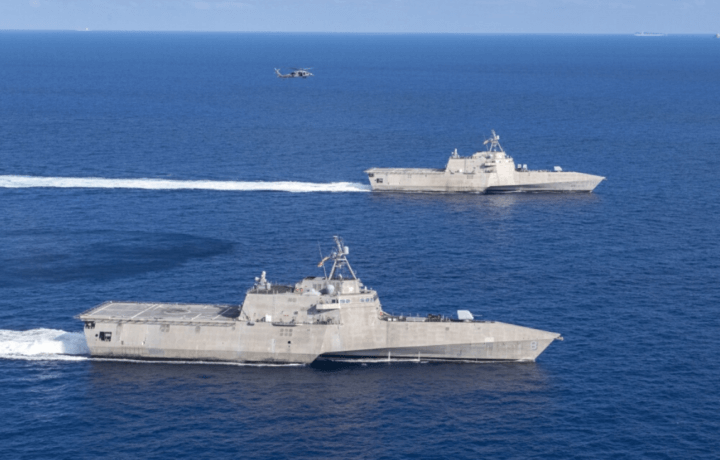The Navy completed bilateral training exercises with Japan in the South China Sea, sailing together on June 23. The practices were intended to enhance operative capabilities between the two countries, emphasizing communications and coordination.
Free and Open Indo-Pacific Region is the Goal
Rear Adm. Fred Kacher, commander of Expeditionary Strike Group 7, said that bilateral training exercises are an effective help to maintaining a free and open Indo-Pacific region. Among the procedures were bilateral communications exercises and precision maneuvering division tactics.
“The opportunity to operate with our friends and allies at sea is incredibly important for our combined readiness and partnership,” said Kacher. Rear Admiral Yagi Kouji, commander of JMSDF Training Squadron, said: “The JMSDF newly commissioned officers not only promoted their basic seamanship skill but learned the importance of improving the interoperability between JMSDF and United States Navy. “I also hope that the newly commissioned officers understand that the bilateral exercises we did today strengthen partnership with the U.S. Navy and the partnership would form the basis of promoting security and stability in the region.”
Allies Improve Joint Capabilities
Japanese ships JS Kashima and JS Shimayuki joined U.S. combat ship USS Gabrielle Giffords as a part of their Training Cruise 2020, giving the Japanese sailors the chance to learn necessary skills and knowledge in conjunction with an allied force. USS Gabrielle Giffords is on a rotational deployment to the U.S. 7th Fleet area. The 7th is the Navy’s largest numbered fleet and operates in the Indo-Pacific area.
Japanese Naval Udates
The bilateral training marks one of several recent developments for the Japanese Navy. The last of the nation’s eight planned destroyers capable of intercepting ballistic missiles left port on Tuesday. Equipped with the Aegis Ashore System, the ship can fire a variety of weapons in addition to ballistic defense. At 170 meters long and armed with 96 Mk 41 Vertical Launching System cells, the newest ship is a modern addition to the Japanese fleet.
The new naval defense comes as a replacement for what was initially planned to be a ground-based ballistic missile defense system. Citing cost and technical issues, Japan suspended the on-ground program earlier this month. The defenses had been expected to be based on the north and south ends of the island, and Japanese officials specifically cited North Korea as reason for their urgency.
Tension with North Korea
The threat to the west is nothing new, but recent moves have placed Japanese officials on high alert. Last week, Tokyo announced it remains on alert after North Korea announced plans to re-enter Korean cooperation sites. The move nullified a 2018 deal between North and South to lower military tensions at border areas.
“We remain on alert to respond to any situation,” Yoshihide Suga, Chief Cabinet Secretary, told a news conference last week. Japan responded by deploying Patriot Advanced Capability-3 (PAC-3) batteries to Tokyo’s Ichigaya base to support their missile interceptors.
Training Goals Or Muscle Flex?
While the joint operations between U.S. and Japanese navies this week were purely for training purposes, their timing and location could be interpreted as a show of force in as a deterrent to North Korean aggression. As the South China Sea continues to be a hotbed of tensions, America’s response should tell Japanese and North Korean forces that we’re not going anywhere.



